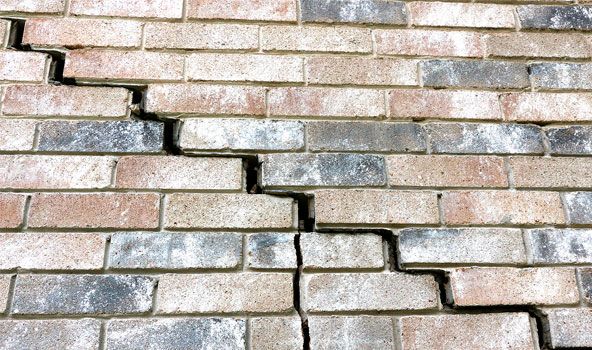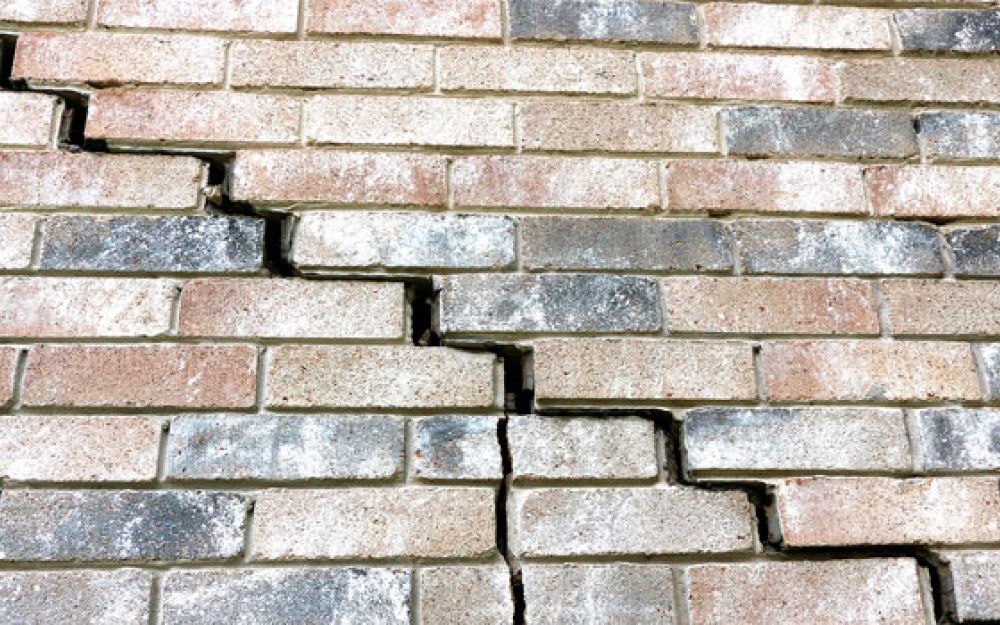10 Signs It’s Time for House Foundation Repair



House foundation issues can hit you like a truck out of nowhere.
Most people don’t give foundation issues much thought. They only notice them when they become out of hand. This is a dangerous game to play.
The sooner you get your foundation repaired, the better. But, before you can fix the problem, you must first identify it.
Check out these 10 telltale signs that it’s time to call a house foundation repair contractor near you to keep your home in good shape.
1. Sticking Windows and Doors
As the weaker foundation moves and settles, it pulls doorframes, window frames, walls, and ceilings out of place. Doors and windows may stick and fail to open or close all the way. They may open on their own if the frames are not level and even.
You may also hear creaking, groaning, or squealing as you move them. You may note that doorframes and window ledges are misaligned or crooked!
Call a foundation repair business instead of sanding down doors to get them to close correctly.
A contractor can inspect the structure for damage and determine if adding house supports is required to bring the frames back to a level position.
2. Interior Cracks
A broken or weakened foundation can’t support the weight of a house as it should. As a result, the house may move in one direction or settle and sink on one side.
The home’s framework pushes on the inside walls and ceilings as it shifts and moves. This causes cracks and other noticeable damage. Inside walls and ceilings sag and sink when the house settles on one side.
This causes fissures in the walls and the ceilings. If those gaps have water stains and musty smells, it could be a plumbing leak. If not, don’t hesitate to call a foundation repair professional in your area!
3. Bulging Floors
A sinking house or a weaker foundation puts pressure on floors. This makes them shift out of their usual level and even position. When this happens, the weakest spots on a floor tend to crack. As one side sinks, the other may bulge outward.
You shouldn’t ignore cracking grout and individual tiles moving out of place.
However, bulging flooring might be challenging to detect beneath thick carpet or tile. The carpet may also “bunch up” in some areas or pull away from the subflooring beneath it.
While improper installation can result in loose tile and carpet, these are also symptoms of a faulty foundation. So if you find flooring issues within your house, call a foundation repair professional.
A foundation specialist can assess the damage, determine if your foundation is at risk of collapse, and advise you on the best course of action to protect your house.
4. Moisture infiltration and Efflorescence
Moisture infiltration from foundation fractures will cause problems on concrete basement walls. Surface gaps or spalling, which is peeling and pitting along concrete surfaces, may be visible. Excess moisture in the basement causes the walls to buckle or bulge over time.
Efflorescence, a white powdery substance, is another sign of a weak foundation. Excess moisture, which dissolves the salts and their concrete binders, enables the formation of this powder.
This happens when salts move to the surface of the concrete. Contact a foundation repair professional for a thorough check rather than assuming that the substance is household dust.
5. Bugs
Let’s face it. We all have bugs in our homes. But, if you see an unusual increase in the number of pests around your home, there could be a foundation problem.
If your foundation’s walls have cracks or holes in them, the population of rodents may increase. You can double-check by going down to your crawl space and looking for any noticeable gaps in the walls.
Earwigs, carpenter ants, centipedes, pillbugs, and roaches are all attracted to damp conditions and will enter your home via foundation gaps.
6. Gaps Around Molding
Fissures at the center of walls and ceilings aren’t the only indication that these surfaces are shifting. Walls may pull apart from each other as they shift due to a broken, weak foundation. This can result in cracks in the corners of interior rooms.
Crown molding and baseboards may move away from the walls and floors as well. You might find gaps running along the borders of these pieces or observe them poking out in different places.
Call a foundation repair professional near you instead of just sealing those cracks or reattaching them to the walls!
7. Plumbing Issues
Sinking and shifting foundations exert pressure on plumbing pipes and connectors. This is the same as they do on the framework and internal spaces of your home. Many people are unaware that plumbing pipes are usually built at a small angle.
This is to allow water to flow slowly and carry solid trash along with it. When pipes sink too much on one side, water may flow too quickly to take solid waste along, causing blockages.
Stress on connectors and pipes can cause cracks and separation. This can result in leaks. These leaks raise your water bills. They also cause structural damage and increase the chance of mold growth within your home.
Have your home’s foundation inspected for damage or weakness if you detect frequent plumbing issues.
8. Off-Kilter Chimney
If your chimney is tilting to one side, you can shake it off and tell yourself it’s just a trick of the mind. Do not disregard your instincts. People have a habit of misdiagnosing this issue.
A leaning chimney is not only more frequent than you might believe, but it can also be hazardous in a variety of ways.
A shifting / broken foundation is frequently the cause of this issue.
You can use a long level on the outside to see if the mortar joints are horizontal and the chimney is vertical. Because some chimneys are designed to be inclined, use your measurements rather than what you see.
9. Separating Walls
Even though all houses settle after the contraction, yours should stay completely intact.
You’re in big trouble if anything that is supposed to keep things together separates them. Separating walls, like bowed walls, indicate difficulties with the foundation.
Your foundation is to blame if you see movement in your walls. The drywall in your home is a great way to check for separate walls.
It’s a good idea to call a foundation professional if your floor, ceiling, cabinets, or fireplace appear to be pulling away from the wall or surrounding trim. Also, you can call if the fireplace or cabinetry seems to be pulling away from the ceiling.
The same should apply if the floor begins to collapse or any brick wall mortar, paneling, or Sheetrock begins to separate at the joints. Look for diagonal chimneys, leaning brick walls, and a patio or a porch that separates the stairs or the house itself.
10. Issues With Counters and Cabinets
Have you ever seen your countertops or kitchen cabinets tilting and moving away from the wall?
It may appear like they’ve moved a fraction of an inch at first. But before you know it, the distance is 1/8″ wide. Your cabinets or countertops will seem to be 1/2″ or more away from the wall before long. You’ve got big problems at that point.
If you notice anything like this, it’s a symptom of foundation damage. Cabinets and a variety of other items in your home become unlevel when the walls aren’t level.
All may appear to be slanted or not hanging correctly to you. This is because something is interfering with your foundation and making it uneven.
Call an Expert for House Foundation Repair
It’s critical to get your foundation regularly repaired if you want to keep your house in good shape.
These issues will worsen over time if they are not addressed. It’s crucial to recognize the warning signals and eliminate foundation issues.
Give us a call as soon as you notice any of these indications. We’ll send an expert and experienced property inspector to assess your property for a possible house foundation repair.
We believe in empowering our clients by assisting them in nurturing and preserving their ideal homes.
Call us today, and let us help you in preserving your house for future generations.

